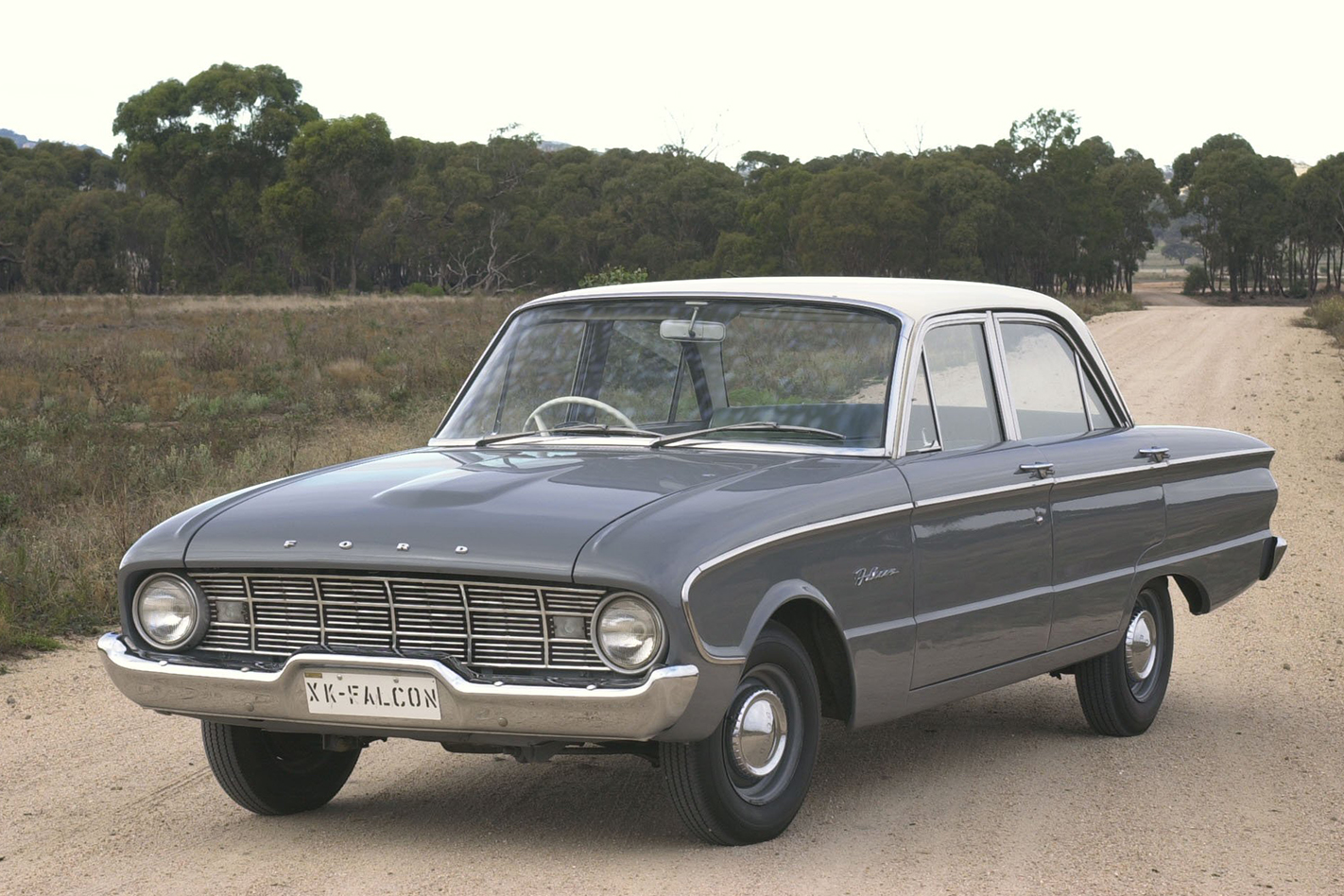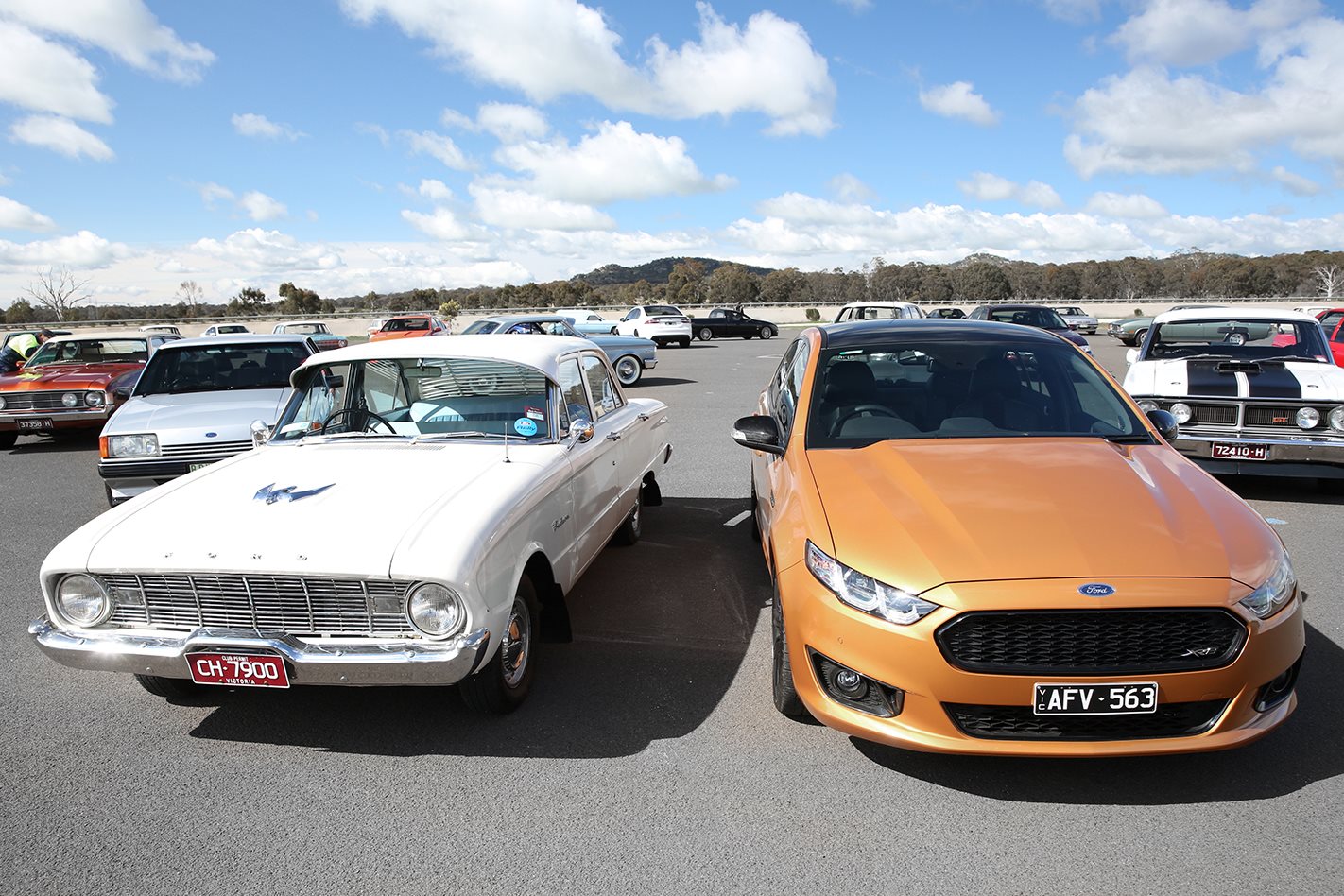In any group of people or things, there will always be examples that contribute more or stand out in some way, just as there will always be those that lurk around in the background, looking at their feet, nothing to add.
This article was originally published in the November 2016 edition of Wheels, and is being republished on the fourth anniversary of Ford Australia ceasing manufacturing in Australia.
The Ford Falcon is no different: some models have arrived in showrooms with the usual fanfare, but have quietly left the building a couple of years later without leaving any great impact.
But against those models, there have been some Falcons that have burned brightly, and yet others that have burned the Blue Oval and its customers’ fingers.
Either way, it’s the standout models that we’re looking at here. Just bear in mind that while the word ‘standout’ has a positive connotation on your kid’s report cards, when it comes to Aussie Falcons, being noticed can often be for all the wrong reasons. Significance is not always born of merit.
That said, there’s been an awful lot to like about Falcons over 56 years and even when the marketing has been questionable or the trumpet of design has played the odd bum note, Falcons have generally made us smile. Here are 10 that also made us think along the way.
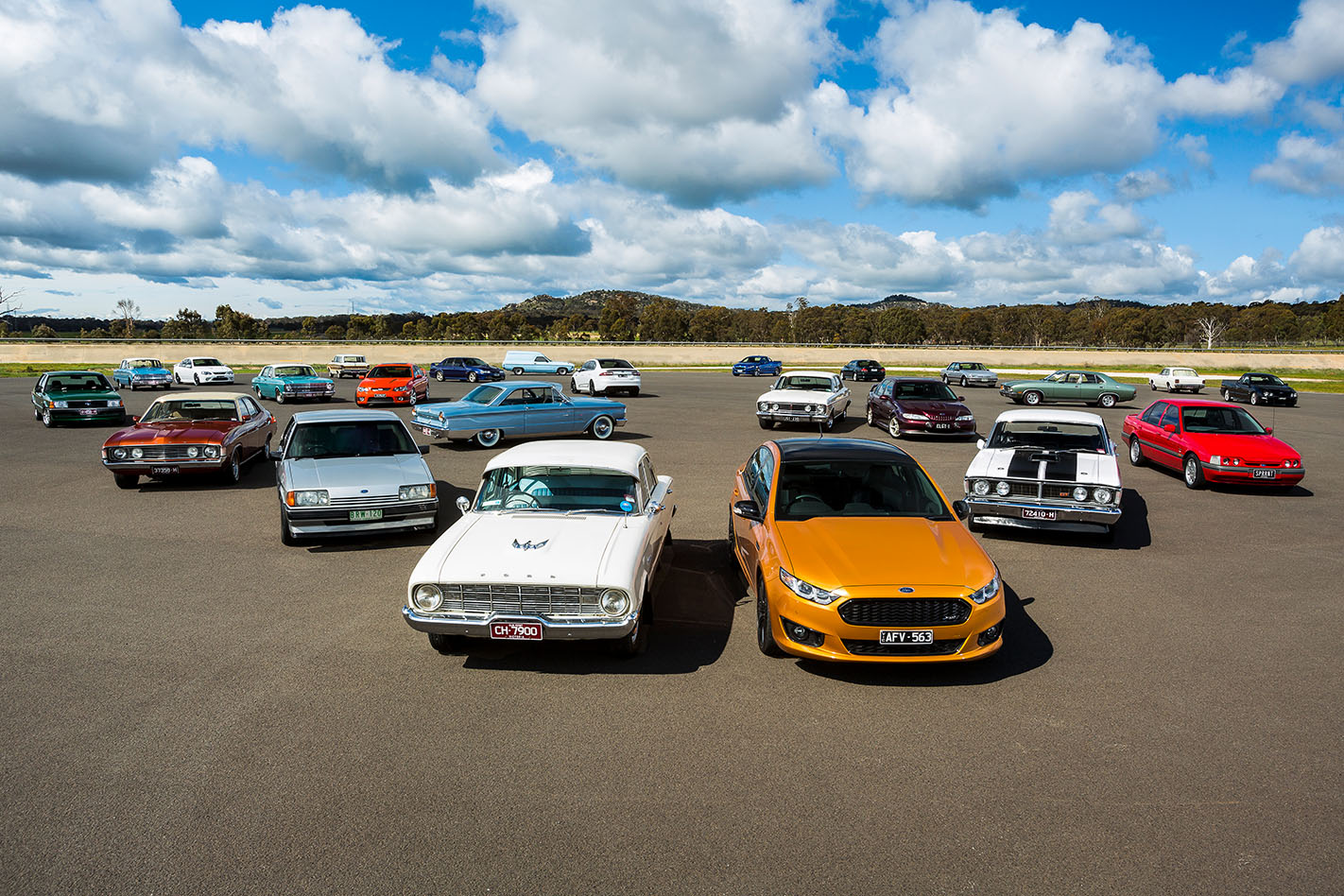
10. FG X (2014-2016): The last and the best
The FGX isn’t perfect. The interior is looking and feeling dated. The driving position is wrong and has been for years. And the suspension, heavily based on the BA of 2002, is now really starting to feel its age. Clearly, Ford has seen the end coming for some time and hasn’t been able to justify throwing good money after bad. Miserable beancounters, however, can’t alter the fact that in every other way, the FGX is a seriously good car. It’s available in a wide range of formats and trim levels and has refinement and performance credentials that place it among the best there is.
The knowledge that the FGX was to be the final Falcon fling gave Ford the excuse to throw a few highly-specified packages at us, including the XR6 and XR8 Sprint models which feature forced-induction engines that are literally world class. Again, the chassis is shown up by these cracking powerplants and drivelines, but something had to give.
But even the cooking models have plenty of performance and decent real-world economy, not to mention that bronzed-Aussie ability to haul a caravan across the Nullarbor in 40-degree heat while carrying five adults. If nothing else, the FGX will go down in history as the car that showed us exactly what we were throwing away. Perfect it wasn’t, but a worthy full-point on an at-times fabulous dynasty? Oh yes.
Total production: 11,570
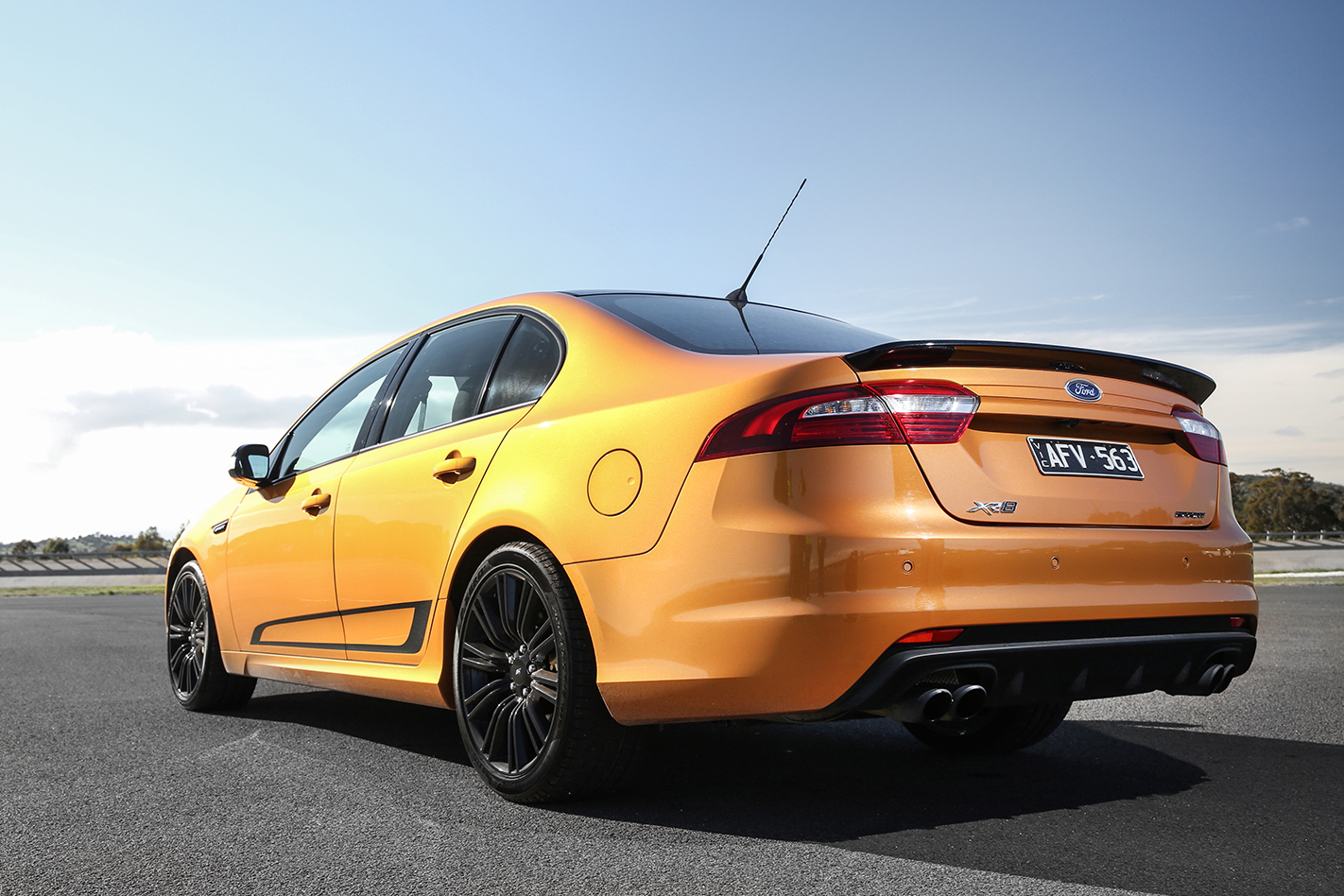
9. XE (1982-1984): Ditching the old cart springs
Based on the XD, the XE Falcon was a big improvement and a car that proved to be the right one at the right time, despite what the contemporary experts would have had you believe. Fears over fuel prices had seen Holden heed those same experts and abandon the full-sized family sedan for the more compact Commodore in 1978, and many expected Ford to do the same in 1979.
Instead, Ford continued to give the public what it wanted with the XD: loads of interior space. The XE, meanwhile, was a big improvement in refinement and continued to give Ford’s crucial fleet customers what they wanted.
The big advance represented by the XE was the shift from old-fashioned leaf springs to a technically superior coil-spring set-up with a Watts linkage (for the sedan; the wagon and commercials stuck with leaves).
Other changes were more subtle but included the move to a more efficient Weber two-barrel carburettor and further development of the alloy cylinder head for the in-line six. As well as being the last Falcon for years to be available with a V8, the XE also built on the surprisingly tasteful ESP (European Sports Pack) option which, with its Scheel sports front seats, Bilstein dampers, full instrumentation and 15-inch ‘snowflake’ alloy wheels, gave some real credence to Ford’s advertising line of the time proclaiming the XE to be the ‘Great Australian Road Car’.
Total production: 193,890
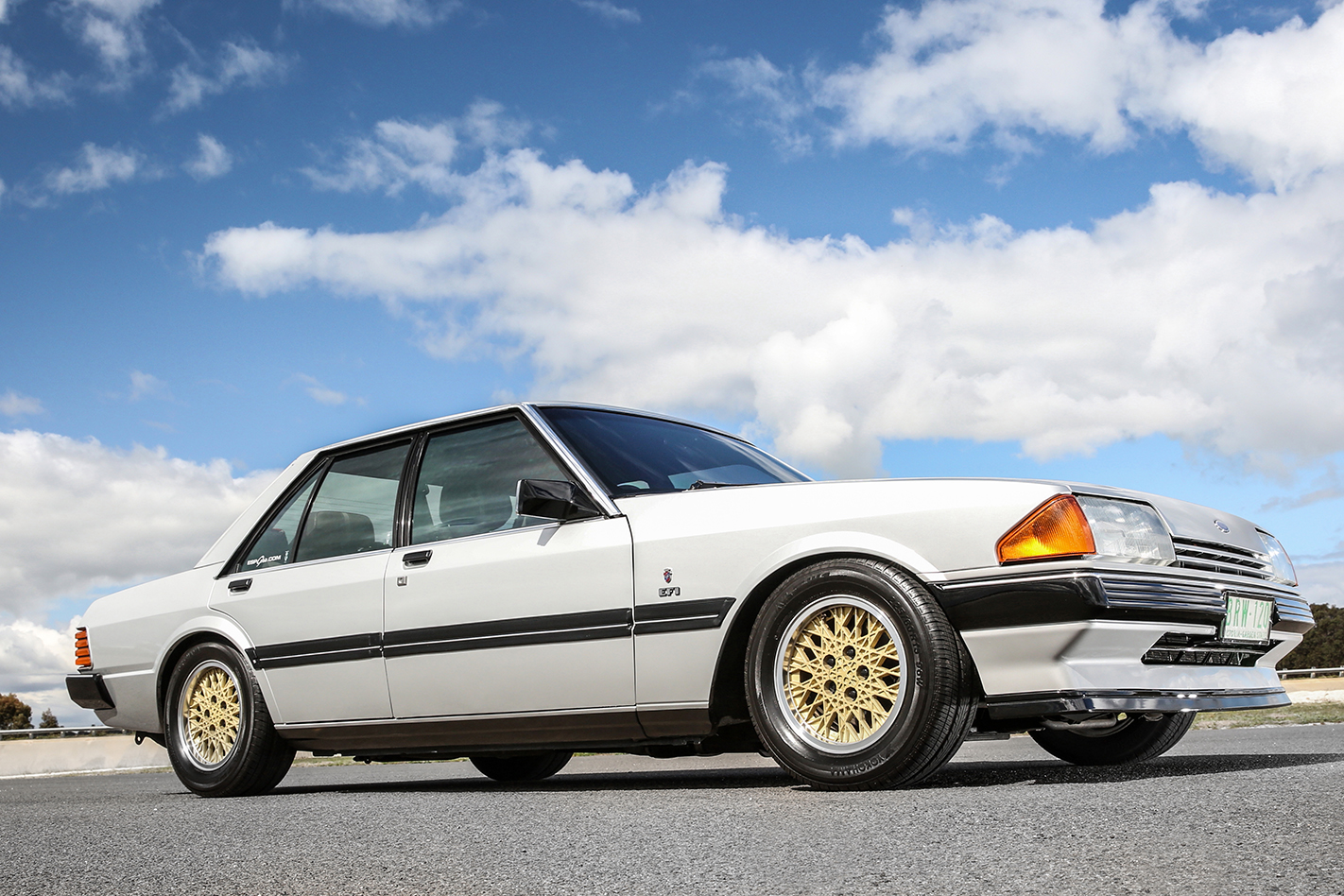
8. EA (1988-1991): The end of the pushrods
Let’s cut straight to the chase here; the EA Falcon was not very good. At least, it wasn’t when it first landed, partly because it was lacking polish, but also because it was straight off the back of the conservative, safe-bet, don’t-scare-the-horses XF. The EA’s body felt tinny, the interior was almost as plasticky as the XF’s and most people just couldn’t see the advance, even if the EA looked a good couple of generations newer than the garden shed with headlights that was the XF.
Even beneath the surface, the EA was hamstrung by its carry-over three-speed automatic, a function of the model being rushed to market in a semi-ready state. But scratch a bit deeper and the EA’s real significance emerged: The Falcon suddenly had a modern (everything is relative) overhead camshaft engine. Okay, the bore centres were the same as the old pushrod six it replaced and it still sounded like a Silver Top, but it was more efficient and went a lot harder than ever before.
Initially available in 3.2- and 3.9-litre configurations, the former was soon dumped by Ford as nobody other than government fleets wanted anything to do with it. A slow start to sales after a few niggles meant the EA was quickly overtaken in the sales race by Holden’s then-new VN Commodore (for the first time in since 1981) but that in-line six still formed the basis of the Falcon’s engine right up to the death-knock.
Total production: 223,612
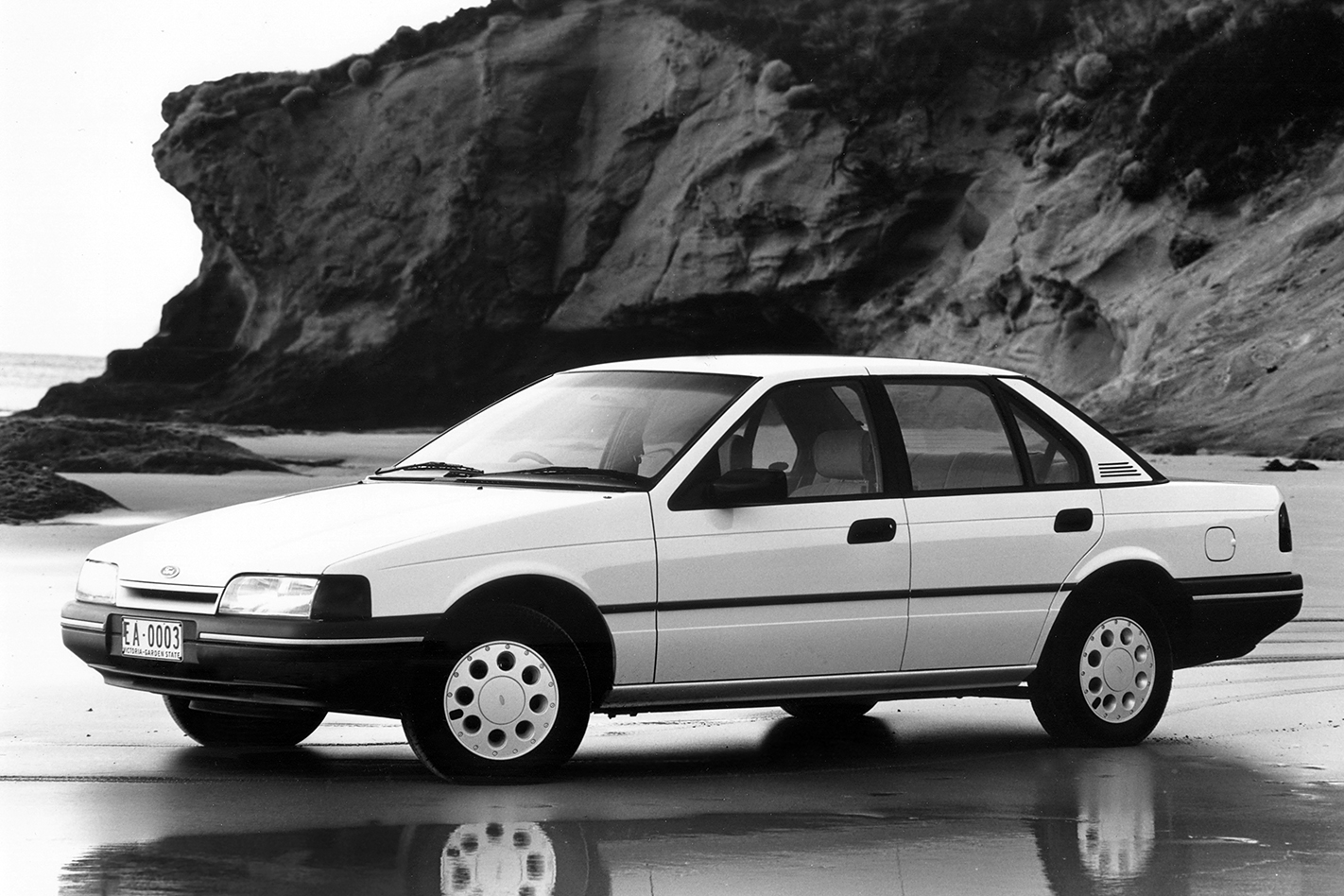
7. EB (1991-1993): The V8 was back
If the XR Falcon was the model that gave us the V8 Falcon, then the EB is the one that returned it to its proper place in Ford showrooms. For reasons known only to Ford’s marketing department at the time, the decision was taken in the early 1980s to ditch the V8, leaving the XF model (and the subsequent EA) to run only with six-cylinder power. But the EB fixed that with the Windsor 5.0-litre engine finding its way beneath the bonnet amid much rejoicing from an adoring public.
But even though the EB looked little different (you needed to be a trainspotter to pick the changes) to the EA, under the skin, the EB was a much better, much safer car. Initially, the EB used the 3.9-litre six-cylinder, but for the ’92 Series II, Ford gave us a 4.0-litre version of the overhead-camshaft six, a capacity the Ford six has retained since.
Safety was a big winner, too, with the EB being the first Falcon to offer optional ABS brakes. And there was more: The A-pillars were foam-filled to massively improve their strength in a roll-over, the front seat-belts gained lockers and the centre-rear seating position gained a three-point seat-belt for the first time in a Falcon. And car thieves hated the EB; the Series II version sported Ford’s Smartlock security system that had the bad guys flummoxed.
Total production: 121,221
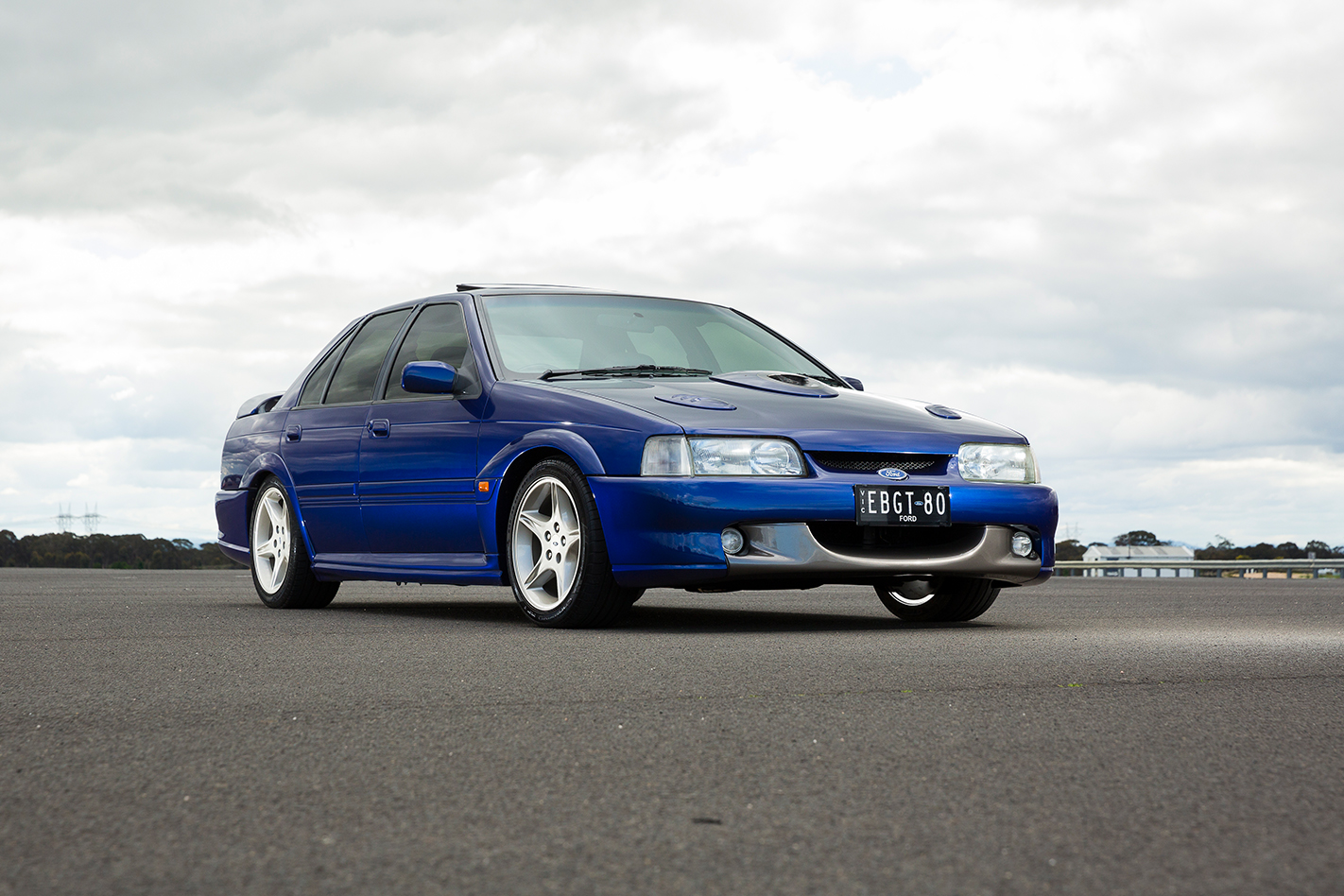
6. XY (1970-1972): The legend of the HO is born
THE BODY style pioneered by the XR of 1966 reached its ultimate form with the XY of late 1970. Compared with what was about to come in the form of the XA just a couple of years later, the XY looked a bit upright and conservative, but it’s still a handsome piece of design. It remains a sought after model, too, and highly regarded by those who know their early birds.
But what makes the XY remarkable is that it formed the basis of the most famous Australian muscle car of all time. Built in tiny numbers (just 300) the GT-HO Phase III was a Bathurst winner, and, with the claim of being the fastest four-door sedan available in the world at the time, became an overnight sensation.
And it’s one that still resonates with Australian enthusiasts to this day. In fact, the Phase III remains the only local production car to ever sell for a million-plus when prices spiked a few years ago. And who can forget the in-car photograph featured in this very magazine with a Phase III on the Hume Highway, its tacho reading 6150rpm and the speedo wound off the clock? Legends don’t come much bigger.
Total production: 118,666
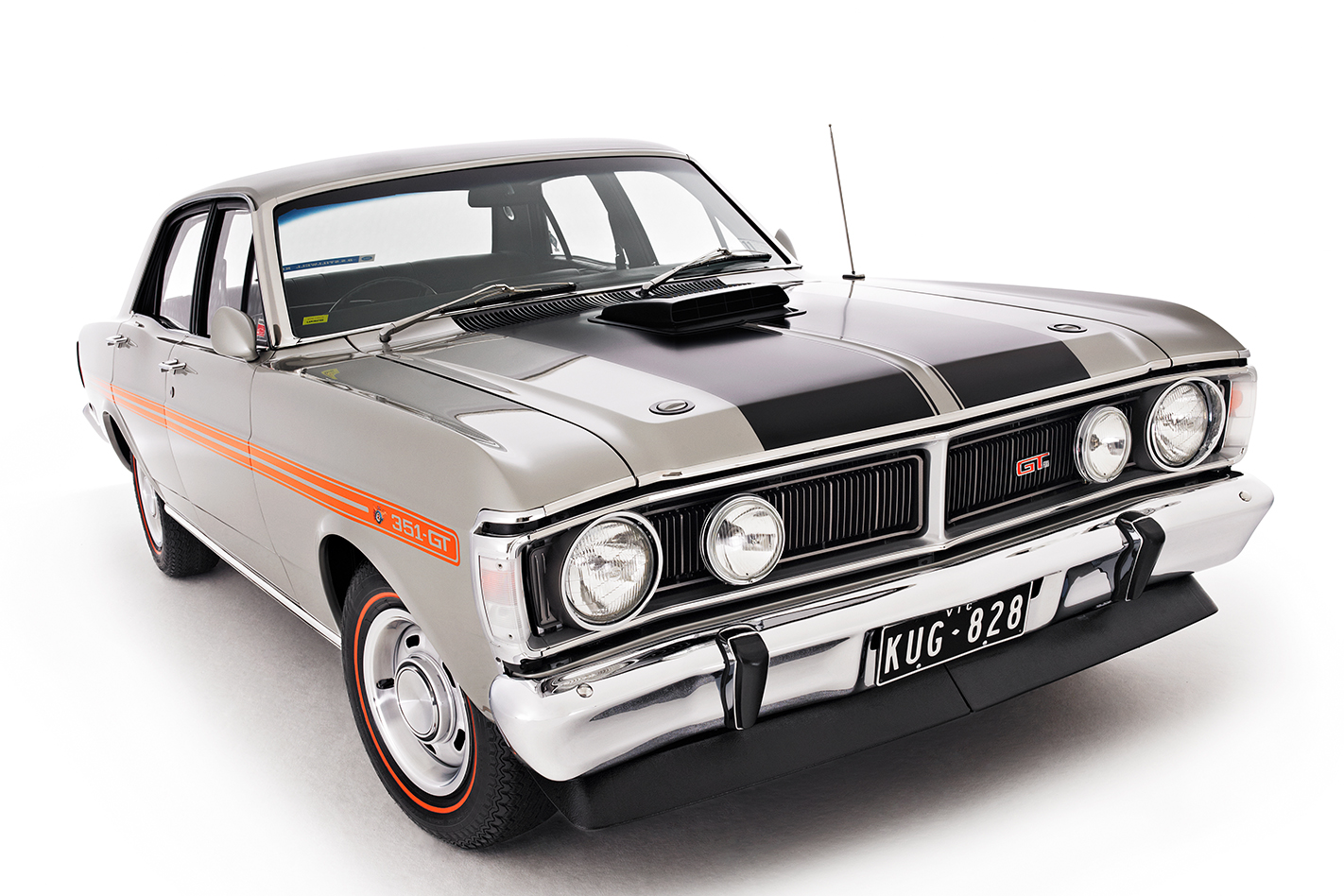
5. BA (2002-2005): Repairing the past
The AU Falcon of 1998 might have ushered in the option of an independent rear suspension, but in pretty much every other way, it was a dud. The problem was largely one of perception. As in, everybody perceived it as being ugly. The original base-model version was the worst with its bloated body teetering around on those skinny little plastic-trimmed wheels and that godawful grille that looked like it was sucking up plankton. So even after AU Series II and III rehashes, the BA couldn’t come fast enough.
A little like the XP of 1965, the BA’s significance lies partly in its track record of soaking up the bad memories of the AU and marking a new start. And it was a clever design, too, because even though it wasn’t an all-new body, it looked as though it was. In fact, the roof stamping and the doors were direct carry-overs from the maligned AU, yet the new front and rear fascias made all the difference.
The BA also heralded the dohc version of the in-line six, not to mention the mighty XR6 Turbo model that would re-write the books in terms of local performance and still stands as the best powerplant ever to be designed and built in this country. Even the IRS was fine-tuned and, although the BA’s Control-Blade system wasn’t as technically pure as the AU’s double-wishbone arrangement, it was more compact and cheaper to manufacture.
Total production: 281,197
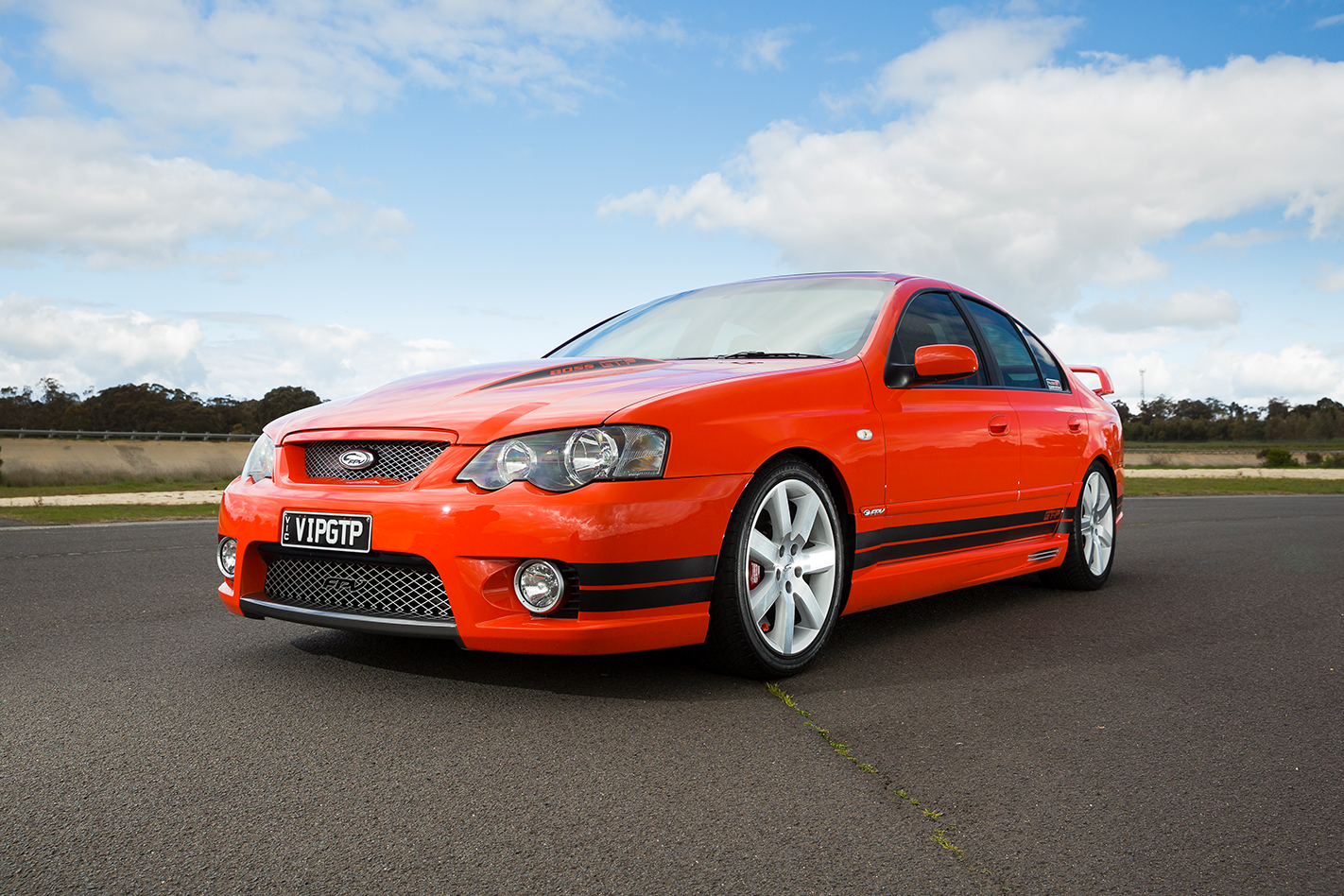
4. XP (1965-1966): Hammering home the point
Plenty of Falcon models have the distinction of being the cars that almost killed the franchise here, but only one can really claim to have been the brand’s saviour. And that model is the XP of 1965. After the disastrous front-end failures of the original XK model, Ford was really caught on the hop.
The first job was to identify what was going wrong; the next was to do something about it. It was pretty obvious that lower ball-joints were a major fail-point in the XK and that the sheetmetal that formed the engine box and suspension mounts was similarly underdone. The solution was not to wait for an all-new model, but to make running changes including substituting the lower ball-joints from the bigger, heavier Fairlane and beefing up the engine box and body with similar gussets and braces as fitted to the US Falcon convertible.
It worked, too, but Ford needed to draw a line in the sand to convince buyers that all was now well. The XP was that line. Ford took the dramatic – some would say crazy – step of running a public relations stunt that would see five of its then-new XP Falcons run non-stop around its equally new proving ground for five straight days, racking up 70,000 miles (112,000km). It proved to be harder to do than to say and crashes were common with drivers suffering fatigue and all but one of the cars winding up on its roof temporarily. Anybody with a CAMS licence was drafted in as a driver, including former Wheels editor Bill Tuckey, who reckoned the venture was equal parts madness and suicide attempt. But all five cars finished and the goal was reached. And the Falcon’s bacon was saved.
Total production: 70,954
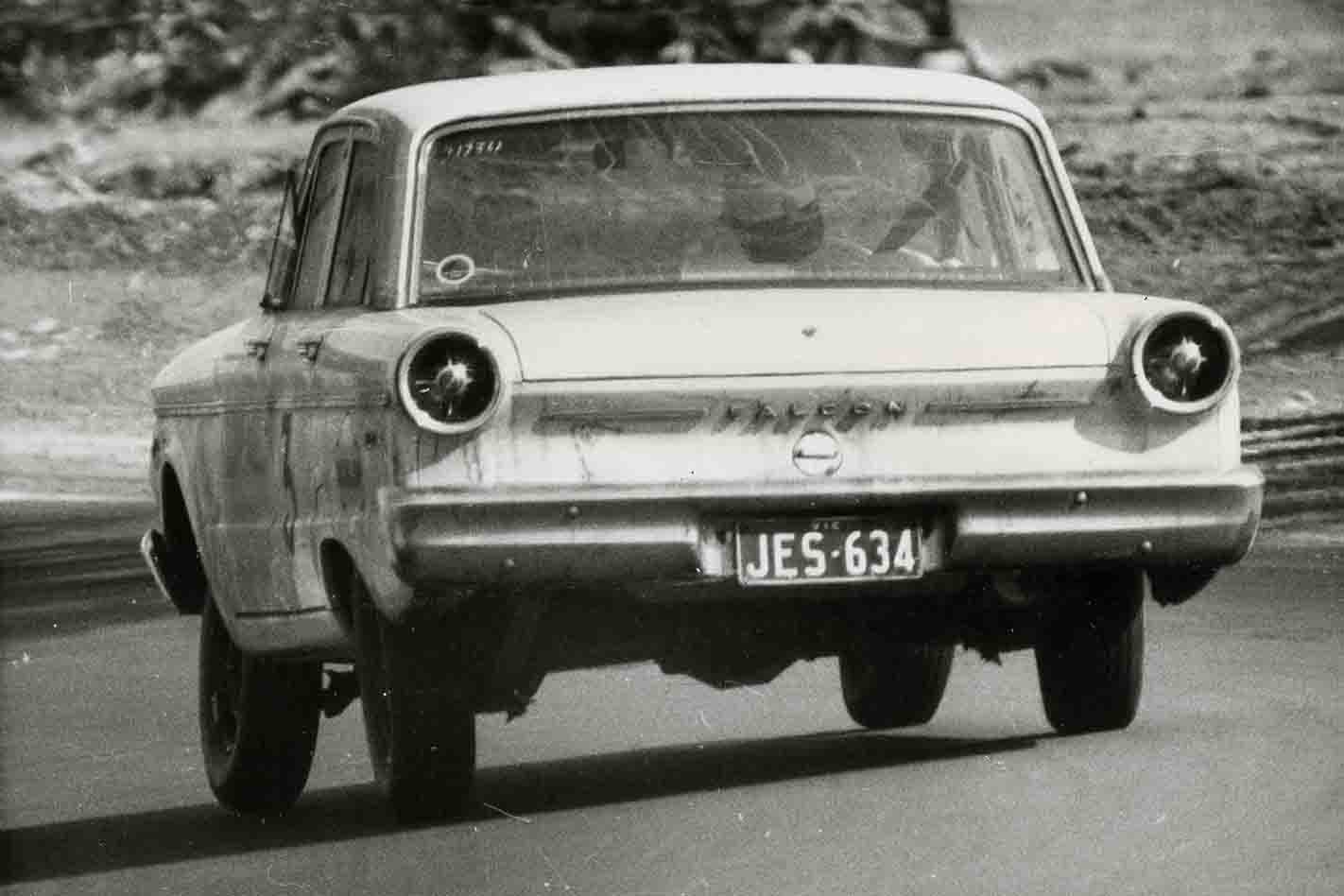
3. XA (1972-1973):Local design at last
Even to those of us who understand that the first decade of local Falcons amounted to hand-me-down designs from Ford Australia’s US masters, the Falcon nameplate will forever be a part of local folklore. And it’s the XA model of 1972 that we have to thank for that perception. The XA was the first Falcon to actually be designed here (albeit with input from Detroit).
The new body was bigger than the outgoing model and quite swoopy and rounded for the time. The US influence can be seen when you line the XA Hardtop up against the US-market Gran Torino coupe; the XA two-door looks like a seven-eighths scale version of the Torino. But none of that mattered to buyers in a pre-internet world: The XA was the first completely Aussie Falcon and that’s pretty much that. It sold well, too, and established the springboard for Ford’s market domination for the next couple of decades.
Beyond that large degree of Australianisation, the XA is also notable for the remarkable two-door Hardtop model. The first Aussie Falcon to be available in a V8 coupe form, the XA Hardtop also formed the basis of a very successful race-car in the hands of Allan Moffat and many others. Cleverly, it used the longer doors and frameless windows of the utility and panel-van Falcons to arrive at a shape that was hardly elegant, but certainly meant business. Like the HQ Holden alongside which it sold at the time, the XA was also the first Falcon to arrive at flow-through ventilation.
Total production: 152,609
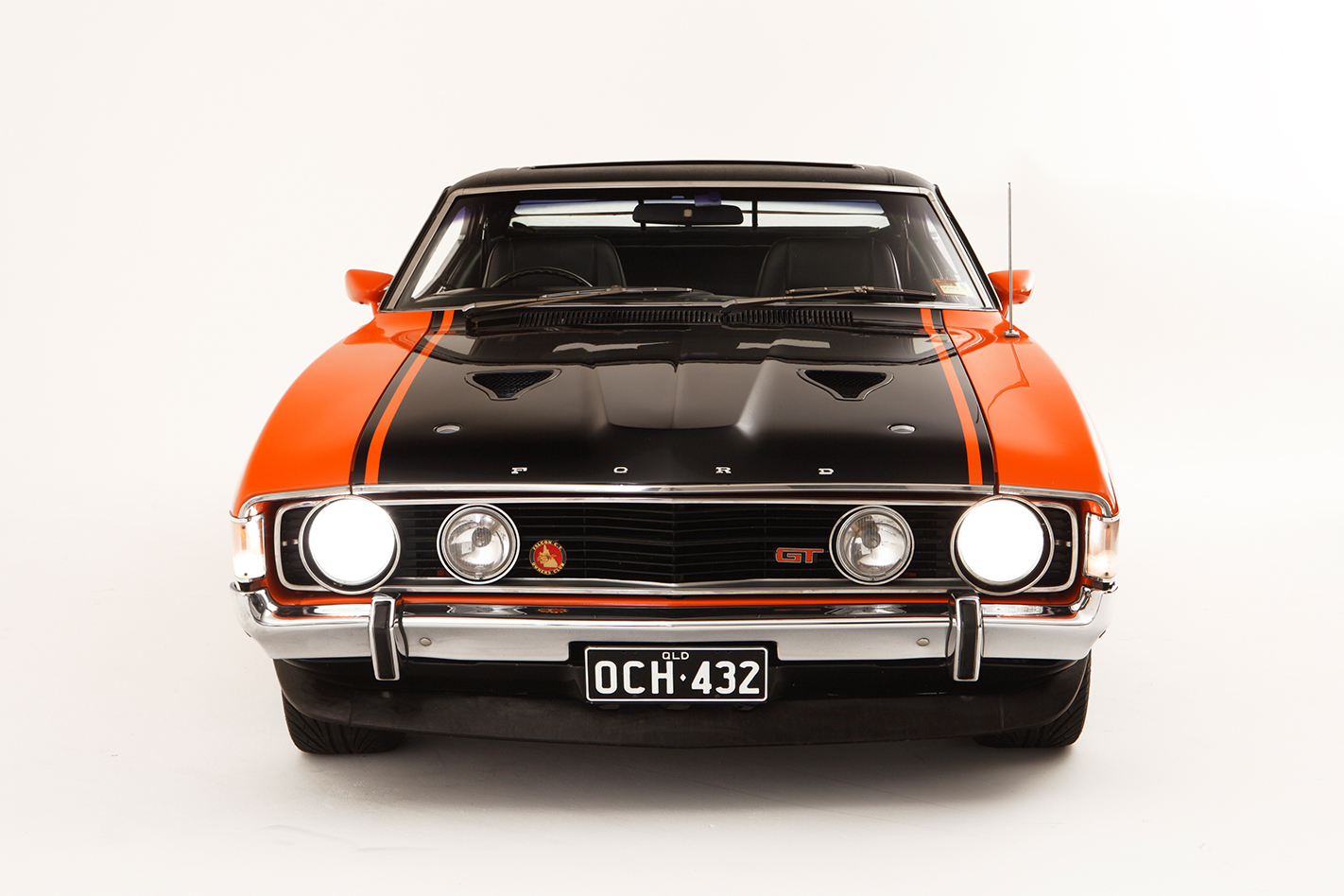
2. XR (1966-1968): The first V8 for the people
Ford’s local Falcons for the early and mid-1960s were certainly lookers. Against the lumpy, top-heavy Holden stylings of the day, the Fords looked sleek and absolutely modern. But they didn’t look muscular. The XR of 1966 changed that forever. Although still heavily based on a Stateside model (the third-generation North American Falcon) the XR was a much more masculine styling statement with a bold, upright grille and those Coke-bottle haunches that were the coolest thing since tail-fins went the way of Tail Gunner Joe McCarthy. ‘Mustang Bred’ said the adverts. Ooh.
But more importantly, the XR was the model that gave us the V8 Falcon and, perhaps even more significantly given what was to come, the Falcon GT. Slotting the 289 cubic-inch (4.7-litre) V8 into the XR was a cinch since the bulk of the engineering had already been done for the US model. But what was clever was that, unlike Chrysler had done with its V8 Valiant option, Ford added the V8 check-box to every page of the Falcon catalogue. Suddenly, you didn’t need to be buying an upmarket model to get your hands on a proper chap’s engine. A Falcon 500 with a 289? No problem, Sir.
The GT, meanwhile, was the car that formed the blueprint of every subsequent Aussie performance sedan. For that alone, the XR holds a special place.
Total production: 90,810
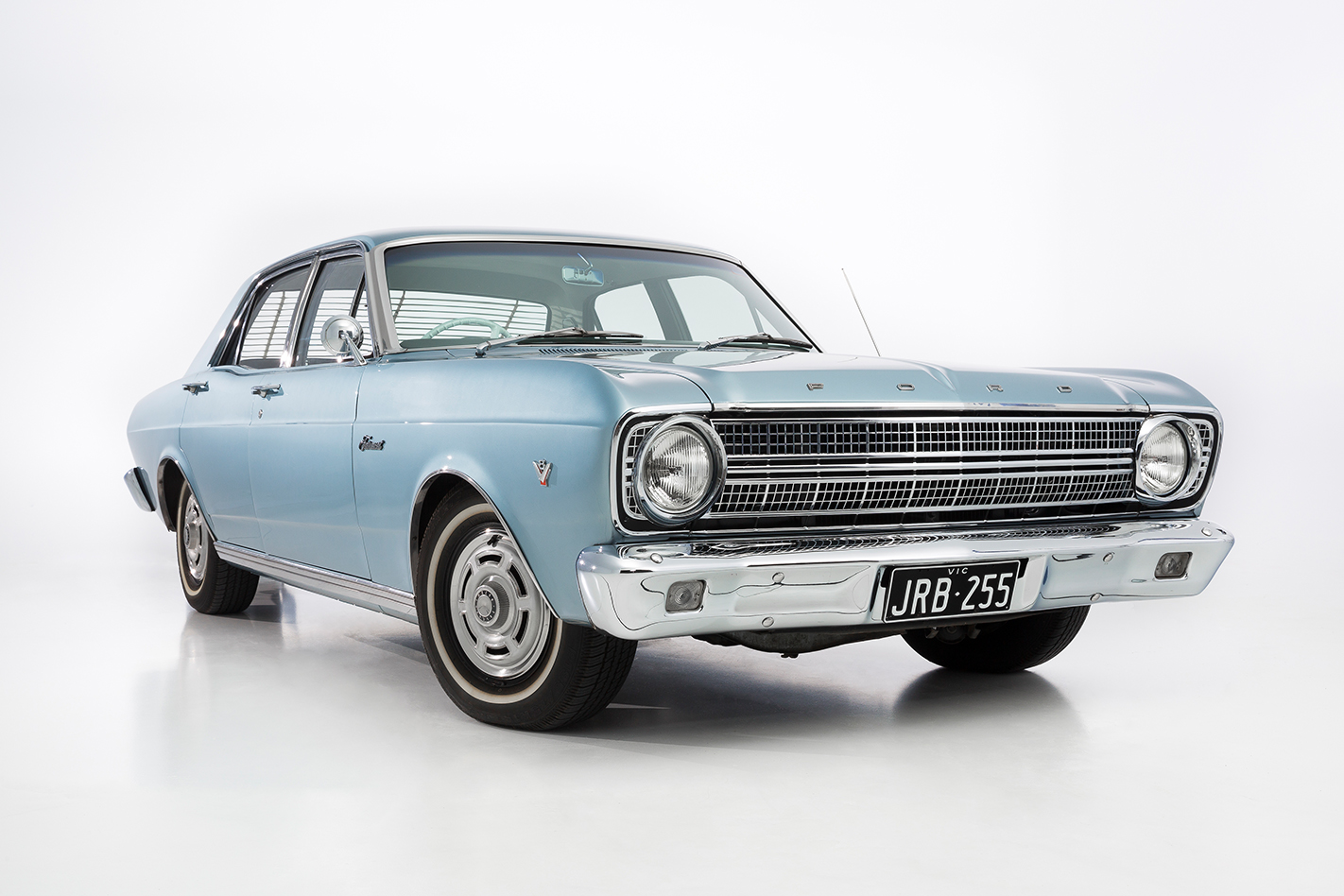
1. XK (1960-1962): The Granddaddy of them all
Plenty of engineers have built working aeroplanes over the years, but the Wright Brothers are the aviators we remember. Fact is, the first of its kind will always be significant and, equally, without that first model – the XK of 1960 – there wouldn’t have been an Australian Ford Falcon at all.
Ford had been assembling cars in Australia since 1925 starting with the Model T, but the Falcon of 1960 was the first Ford to be stamped out of a roll of sheet steel in this country, rather than assembled from a big box of bits.
The XK was also the first Aussie Ford to make use of the Broadmeadows assembly plant and the brand-new engine plant at Geelong which screwed the spark plugs into the first Falcon six-cylinder engine in April of the same year.
Of course, ‘significant’ doesn’t necessarily mean smiley emojis all round, and if the XK’s significance includes its trailblazer status, we should also mention the fact that it almost killed the whole enterprise dead as well.
Based heavily on a US-specification compact Ford, the Aussie Falcon was seriously underdone in the front end. And early on, customers were finding that our typical roads of the day were causing mechanical mayhem with trashed ball-joints and suspension towers cracking and failing. But, hey, let’s not forget that Wilbur Wright crashed the Flyer three days before the brothers finally tasted success on December 17, 1903. If at first, etc…
Total production: 68,413
